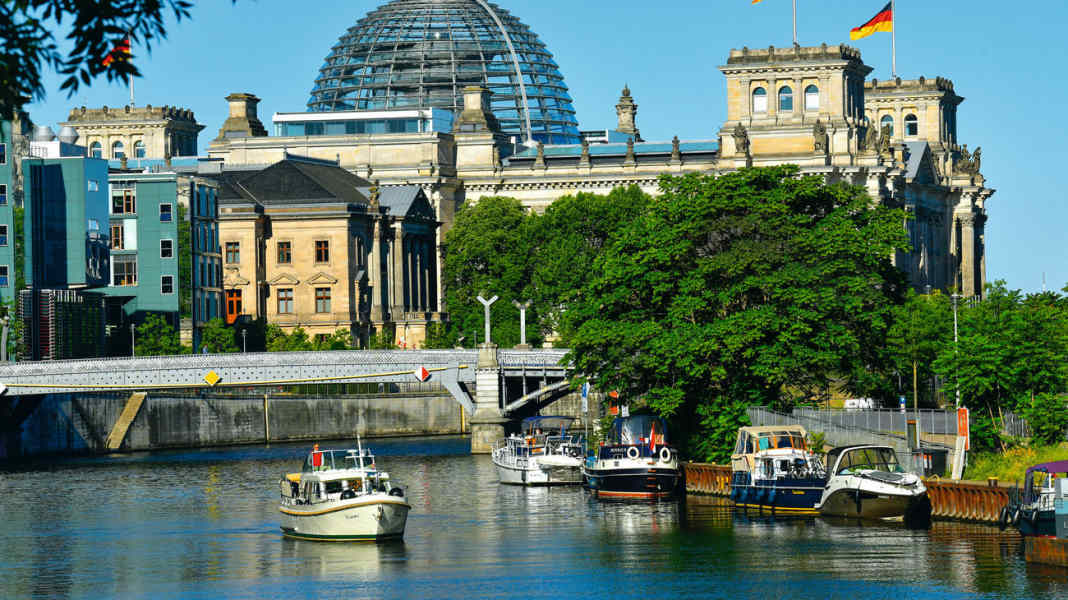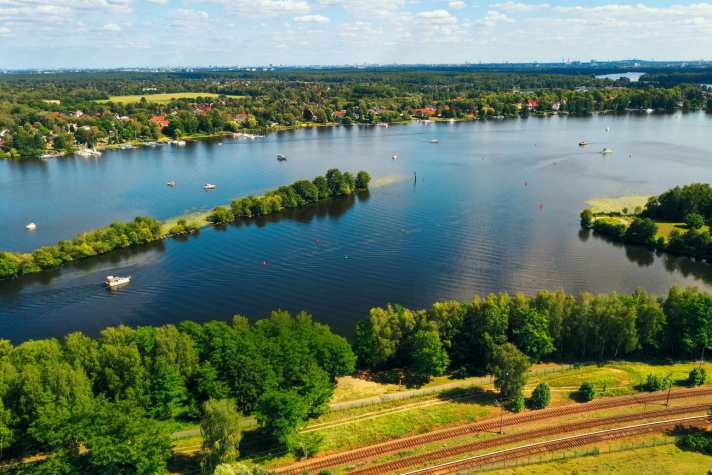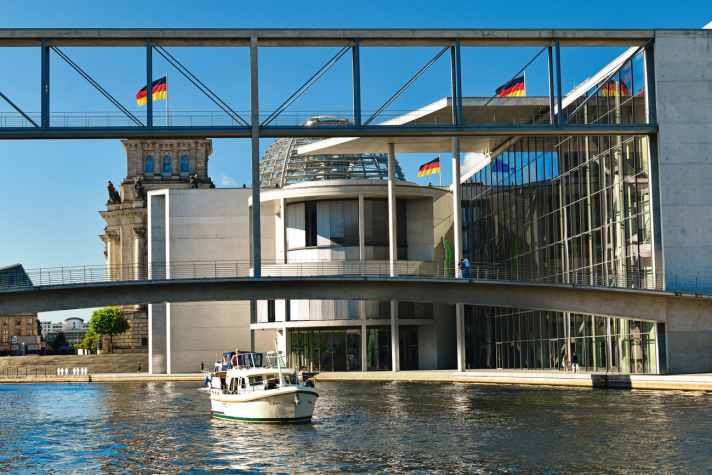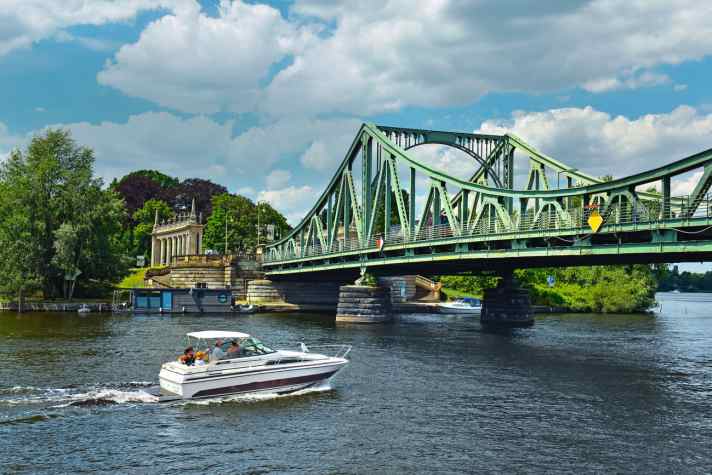Report: Of barriers and escape attempts - how the Berlin Wall restricted boating

Today, motorboats travel from East to West Berlin and vice versa via the Spree, Landwehr Canal, Britzer Verbindungskanal and Teltow Canal as a matter of course. The boats travel beyond the barely perceptible Berlin city limits to the lake-rich areas around Köpenick or west of the capital via Potsdam to the regions of the Lower Havel.
Germany was reunited 30 years ago on 3 October. For boaters from East and West Berlin and the surrounding Brandenburg region, this is a special reason to celebrate: they have gained one of the most beautiful water sports areas in Europe. For 28 years - from the construction of the Berlin Wall in 1961 until its fall in 1989 - there was no freedom on the water in Berlin, neither in the East nor in the West. The waterways of the divided city led from the Soviet sector to the sectors of the Western powers USA, Great Britain and France. On 13 August 1961, the GDR rulers tried to stop the mass exodus of their own population and sealed off the borders to West Berlin. All waterways near the border were sealed off with Wall corridors and barriers. Where boats once travelled, the SED regime erected the most expensive and dangerous border in the world at the time. Any attempt to cross it illegally was life-threatening.
What were the boating areas of East and West Berliners like during the 28 years of the Wall?

The lake district in south-east Berlin, i.e. Müggelsee, Dahme, Storkower Gewässer and Scharmützelsee, belonged to the GDR. However, if an East Berlin boater wanted to head towards the city centre on the Spree, the world came to an end very quickly. Even in Köpenick, the access from the Dahme into the Teltow Canal, which led to West Berlin, was blocked, filled in and barred. The branch from the Spree into the Britzer Zweigkanal was also blocked in Treptow, as the sector border ran through the canal.
Down the Spree towards the city centre, GDR boaters were only allowed to sail as far as the Elsenbrücke (Stralauer Brücke) in Treptow, where the Weiße Flotte is still moored today. Further travel for pleasure craft was strictly forbidden! Behind the bridge is the Osthafen harbour. The harbour belonged to the GDR, as did the full width of the Spree. But the opposite bank belonged to West Berlin. The entire eastern harbour was therefore sealed off with a wall. Border area! Access only with a pass.
For more than 28 years, you never saw a pleasure boat on the Spree in Berlin-Mitte (GDR). The boating areas from Potsdam to West Berlin were also closed off. If a GDR motorboat driver wanted to travel from Köpenick to Potsdam, he had a problem. The direct route via the Teltow Canal (37.8 km) was out of the question as it led through West Berlin. The Landwehr Canal or the Spree also led through the West - no chance! What did the inventive Ossi do? No, trailering was out of the question because you couldn't buy a boat trailer. The quickest waterway from Berlin to Potsdam was via Poland. A motorboat flying the flag of the "workers' and farmers' state" had to travel via the Spree-Oder waterway to Eisenhüttenstadt, then down the Oder to Hohensaaten, from there only via the Havel-Oder waterway, Havel Canal and Lower Havel waterway and - whoosh - after a week's journey and 325 kilometres on the log, it had already travelled from Berlin to Potsdam. But this trip was never a matter of course. It depended on the climate. On the one hand on the meteorological, because the Oder didn't always have enough water, on the other hand on the political, because the brother nations GDR and Poland were only pretty much best friends.
During the 28 years of the Wall, there were only two sports boats that travelled on the Spree through Berlin-Mitte: At the end of the 1970s, the GDR sailing yacht "Berliner Bär" was to be ferried from the coast back to the Chemie Erkner company sports association. With a draught of two metres, the yacht was unable to sail up the Oder to Eisenhüttenstadt. She had to enter the Havel-Oder waterway in Hohensaaten. In Hennigsdorf, just before the border to West Berlin, the yacht was moored alongside a GDR inland vessel and towed through the western sector. The crew naturally had to disembark before the transit through the "class enemy".

The second boat that travelled through Berlin was the motor yacht "Petra" owned by GDR composer and jazz musician Günther Fischer. As an international star and foreign currency earner, Fischer had an unlimited passport. In September 1976, after his trip to Denmark, he travelled alone on the yacht up the Elbe and across the Havel to Berlin. To get to his berth on the Dahme, he sailed through West Berlin and got lost without mercy. The West German water police finally escorted him to the zone border. In January 1993, the news magazine Spiegel exposed the musician as a Stasi informant.
And what did the world look like for West Berlin boaters?
Their territory between Nieder Neuendorfer See in the north and Glienicker Brücke in the south was manageable. All cross-border boat traffic to Brandenburg or East Berlin was prohibited. Signs and buoys on the waterways warned of the sector border. The sight of the martial Wall and soldiers armed with Kalashnikovs on guard boats and border towers was a deterrent. For West Berlin boaters, the lakes of the GDR were further away than Lake Titicaca.
If a West Berlin skipper wanted to take his boat to another area, he had to load it. The freighter "Heimatland" transported sports boats as deck cargo in transit through the GDR to Lauenburg. From there, they were able to sail on their own keel via the Elbe-Lübeck Canal to Travemünde. Up to six pleasure craft were sometimes towed by the "Heimatland". The convoy was only allowed to spend the night in certain places, which were secured by the GDR water police to prevent East Germans from approaching the towed convoy. At times, the "Heimatland" also travelled to Stettin.
In our retrospective, we show four focal points of Berlin's once divided waterways. The stories that took place there bear witness to incredible courage and the unbroken longing for a life of freedom.
Nieder Neuendorf Lake/Havel Canal
In 1951/52, the GDR built the 34.9 km long Havel Canal in just 13 months so that the ships of the workers' and farmers' state no longer had to travel through West Berlin. The canal branches off from the Havel-Oder Waterway (HOW) to the north-west of the Berlin city limits, runs around West Berlin and flows into the Lower Havel Waterway (UHW) to the east of Potsdam. After the border was closed in 1961, this triangle of waterways became a neuralgic point. This is because the HOW comes from West Berlin. The triangle is tangent to Nieder Neuendorfer See, through which the border ran.
After the GDR passenger ship "Deutschland" broke through the border at this point, the SED leadership had a narrow corridor built for cross-border shipping to West Berlin. To this end, they sank barges filled with rubble. The corridor, in turn, was sealed off by a walkable pontoon barrier with steel nets hanging below it. The jetty of the border crossing point was in the corridor. A gap in the barrier was only opened for a few minutes once the ship and crew had been cleared. GDR sports boats travelling from Potsdam to Mecklenburg, for example, were allowed to pass this neuralgic point from one hour after sunrise until one hour before sunset. They had to sail along the GDR-side bank and were secured by a police boat. The entire area around the waterway triangle was secured for kilometres by walls, expanded metal fences, signalling systems, dog runs and watchtowers.
Berlin-Mitte
Nowhere else in the world was a waterway so hermetically sealed off as the Spree in Berlin-Mitte. It flowed through the epicentre of the Cold War from the Soviet to the British sector. The banks were hermetically sealed off westwards from Friedrichstraße S-Bahn station so that no GDR citizens near the border could get close to the river. Border troop boats patrolled the Spree. Only the cargo ships of VEB Deutsche Binnenreederei were allowed to transit through West Berlin. To do so, the captain and crew had to leave the ship. A crew of party comrades and Stasi employees steered the cargo ship through the territory of the Western Allies. The regular crew were only allowed back on board in Potsdam or Hennigsdorf.
Berlin-Friedrichshain/Treptow
Between Elsenbrücke and Schillingbrücke, the Spree was border waters. The full width of the water belonged to the GDR, the west bank to the American sector. The East Harbour, which was still in the GDR, was surrounded by a border wall that is now world-famous as the East Side Gallery. Only hand-picked workers with special passes were allowed into the East Harbour. You could have jumped into the water in the harbour and swum to freedom. The entire East Harbour was under surveillance. The white and green boats of the water police and the grey boats of the border troops patrolled the water. The police boats were powered by GDR engines, while the border patrol boats each had two Aquamatic Z drives from Volvo Penta. Due to their power and manoeuvrability, the border boats could have thwarted any attempt by a police boat to escape. It was not until the 1980s that Volvo learnt that its engines were being used to hunt people. From then on, Sweden no longer supplied spare parts to East Berlin.
Potsdam
The border to West Berlin ran through the waterway junction in the north-east of Potsdam. Coming from Potsdam, pleasure craft were allowed to sail as far as the southern part of the Tiefer See. There were bar barrels in the middle of the lake, although the border only ran one kilometre further north through the Glienicker Lake. A pontoon bridge sealed off the waterway at Babelsberger Enge, with a steel net hanging below it, to prevent pleasure craft from breaking through.

On the Sacrow-Paretzer Canal, the journey ended for GDR boaters in the village of Nedlitz; the onward journey to Jungfernsee was blocked. At its natural narrowing at kilometre 18.5 was the border checkpoint for GDR ships in transit through West Berlin as well as for West German and West Berlin inland waterway vessels. No unauthorised person could access this area. The banks before and after were made inaccessible with walls and barriers. The water barrier consisted of pontoons with attached steel nets, which were only opened when a ship was authorised to pass through.
The boats of the GDR water police and border troops were also moored here. Only police officers who had been checked by the Stasi were allowed to patrol on the "enemy side", i.e. beyond the barriers. They had to be members of the party and have a family. There were three of them on board to monitor each other.
For boaters from West Berlin, the border at Potsdam was a challenge. From Pfaueninsel, the border ran through the centre of the Unterhavel and was marked with buoys. Brave skippers ventured further south to Jungfernsee, where the border ran under the Glienicke Bridge. Those who were particularly bold would cheekily sail into the narrow Glienicker Lake, through the centre of which the border ran.
BOOTE employee Jürgen Straßburger, who sailed here in the 1980s, remembers: "If we came up against the wind and touched the imaginary line between the border buoys, a clear loudspeaker announcement came from the guard boat or tower: 'Leave the territory of the German Democratic Republic immediately!"
This article was published in September 2020 and has been revised for this online version.

